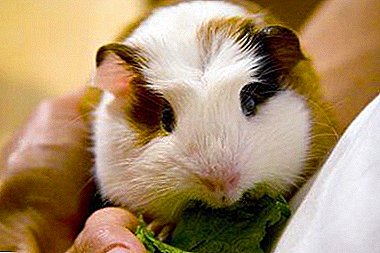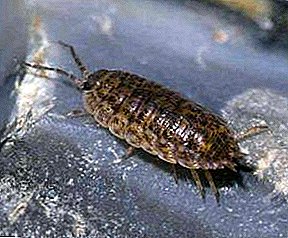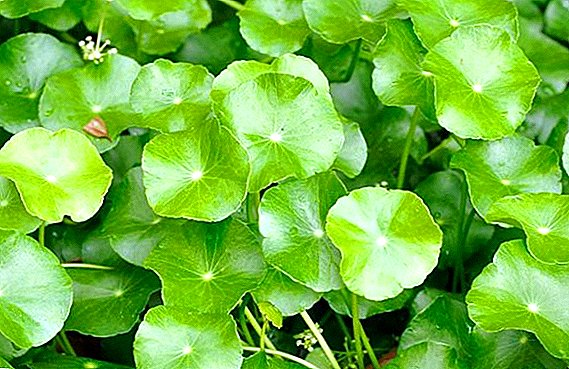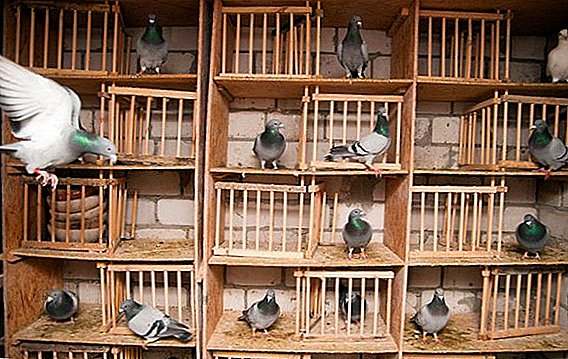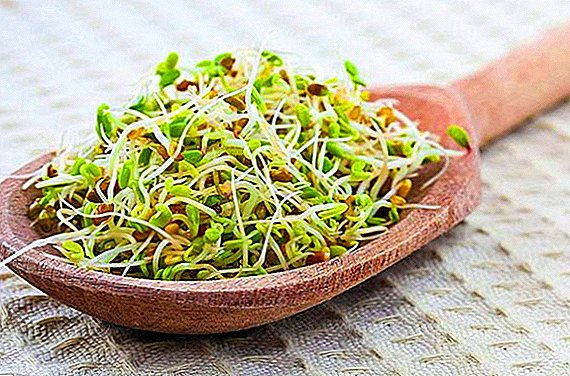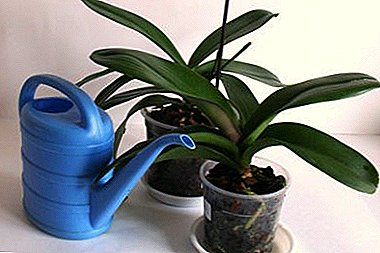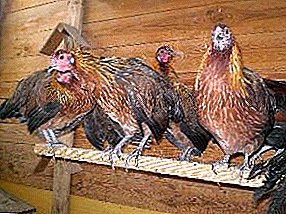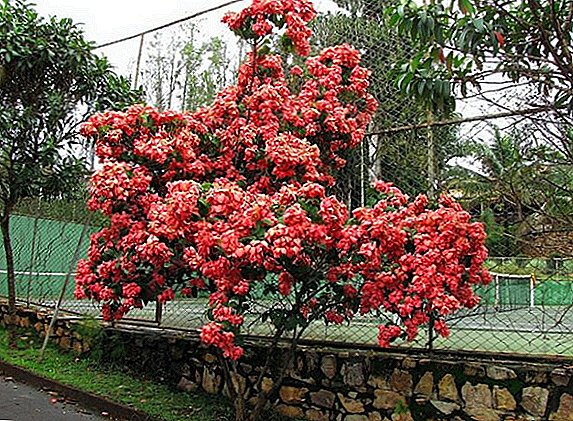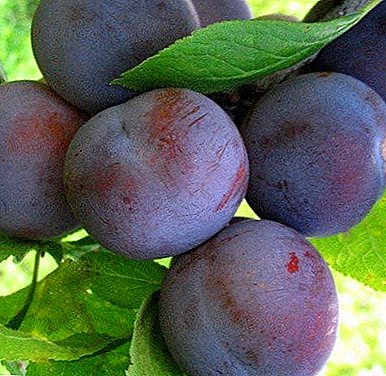
Soviet Renklod is one of the most famous and deservedly popular plum varieties in our country.
The very word "greengage" is French. It refers to a variety of plums that produce large, round and juicy fruits.
Initially, greenclaws grew in France, Germany, Greece, Italy. And in the middle of the 20th century, several good varieties were bred in Russia, including the Soviet Uncle.
Description plum Renklod Sovetsky
Plum tree - low, even for a half dozen years, it rarely grows above 3 meters. The young plum in the shape of a crown resembles a panicle that is stuck in the ground and turned green.
Her foliage is rare, but the fruit gets more sun. The bark of the tree is smooth, gray-brown in longitudinal cracks. May plum blossoms in white flowers with round collection petals.
The fruits of this variety are large, dark-purple balls almost flattened laterally, about 4.5 cm in diameter, covered with a light wax coating. WITH
Average plum weighs just over 40g, and the largest - twice as heavy. The flesh of plums is brown-yellow, dull, bleeding juice. But if perezaret, it becomes very soft and loose. However, the taste of plums - sweet with refreshing sourness - it does not spoil.
Breeding history and breeding region
 The beginning of the variety variety of green trees was put by a typical representative of this group - green green, also known as Greek plum. He became the "great-grandfather" of many Western European and domestic varieties. Among his descendants and Renklod Soviet.
The beginning of the variety variety of green trees was put by a typical representative of this group - green green, also known as Greek plum. He became the "great-grandfather" of many Western European and domestic varieties. Among his descendants and Renklod Soviet.
He appeared at the Rossoshanskoy experimental station. The parents of this variety are Plum Record, known for its high yield and Renklod Ulyanischeva, famous for its large (more than 50 g) fruits.
New variety Renklod Soviet, named in honor of the success of domestic breeding, widely spread in kolkhoz gardens and personal plots. In 1986, this variety was acclimatized in the Central Chernozem region, and since then the Renklod Soviet has been cultivated with pleasure in Voronezh, Kursk, Belgorod, Lipetsk and Rostov regions.
A photo
In more detail plum variety "Renklod Soviet" can be seen in the photo:



Characteristics of a variety
The variety Renklod Soviet is famous for its frost resistance - it doesn’t even harsh 25-30-degree cold. This variety showed a record of winter hardiness in the winter of 1975-76, when the frost reached a 34-degree mark. Plum hardly suffered, losing only about 1.5% of flower buds.
 Another important advantage of the variety for which gardeners value it - regular high yield. Fruiting trees begin already at 4-5 year.
Another important advantage of the variety for which gardeners value it - regular high yield. Fruiting trees begin already at 4-5 year.
On average, one teenage tree produces about 10 kg of fruit annually for the first 4 years (for comparison: one of the parents of the plum variety Record of the same age gives only about 4 kg).
A mature Renklod Soviet tree is able to give a bountiful harvest - from 33 to 40 kg (whereas the Record is only 18-19 kg). However, individual plum-record holders in favorable years brought 50-60 kg of fruit each.
Plums of this variety can be harvested in the south of the Central Black Soil Region in the first half of August, and in central Russia at the end of this month. Sweet (more than 9% sugar), but at the same time not cloying and rich in vitamin C (about 8 mg / 100g) - the fruits of Renklod Soviet are especially good when fresh. Their small (only about 3% by weight of the plum) bone easily moves away from the pulp.
For compote Renklod Soviet is not suitable - plums are too soft and quickly boil soft. But of them you can make a very tasty and healthy juice with pulp, cook jam, jam. They are great for marmalade and pastila, sauces, homemade wine and fragrant liqueurs.
Renklod Soviet variety plums contain many pectins, mineral salts and organic acids - have therapeutic and dietary propertiesin particular can help with constipation.
Caution: because of the laxative effect, small children should be given a little.
Planting and care
How to plant a tree and how should it care?
When and where to plant?
The best time to plant a plum is in the spring, before the buds bloom. Planting in the fall is not worth it, even if the seedlings are already purchased, it is better to prikopat them, and plant them in March-April.
Finding the right place for plums is very important, because their taste will depend on it. If the tree is in the shade or in the wind, the sweet fruit from him not to wait. The warmer and lighter the plum is, the sweeter the harvest will be.
 Good put the greengage in a bright place, so that from the north and west it was covered by some kind of construction or fence. If there is nothing to shelter from the wind, you can build a temporary greenhouse.
Good put the greengage in a bright place, so that from the north and west it was covered by some kind of construction or fence. If there is nothing to shelter from the wind, you can build a temporary greenhouse.
When planting several plants, you need to leave at least 3 meters between them so that the roots have room to grow and the crowns do not block the light to each other.
Sour soil for this plum is not suitable - she loves neutral moisture-absorbing and loose loams. At the same time, groundwater should lie no closer than 2 m. The hole for a seedling is needed half a meter deep. Place a peg near the tree and tie a plum to it from the north. It is not necessary to fertilize the soil during planting - sprinkle the roots with clean earth.
Renklod Soviet is a home-made plum cultivar, and it does not intersect with "aliens" - cherry plum, thorns, Chinese plum. For pollination, she needs either her brother, a green leaf, or another sort of home plum.
How to care?
Caring for the Soviet Renklod includes watering, dressing, crown formation, pinching of young shoots and thinning of fruits. Covering trees for the winter is not necessary.
Watering. Plum needs moisture more than other stone fruits, because its roots are shallow - 20-40 cm. If the tree lacks water, it grows poorly and produces little fruit.
Water plum (if the weather is dry) should be evenly, with bud break and before the fruits begin to ripen. Moisture is especially needed to green leaf while growing shoots and formation of ovaries. If you don’t water the plum during this period, the ovary may crumble.
Before watering the tree, always loosen the soil so that there is no crust overlying water and air access to the roots.
Top dressing. Sort Renklod Soviet loves feeding. In winter, organic fertilizers are good for him, and in spring and summer, when the plum grows actively, it is necessary to apply nitrogen fertilizers to the soil. The best composition of complex fertilizer for plums is as follows: nitrogen, potassium, phosphorus plus trace elements - iron, magnesium, zinc, calcium, copper, manganese, sulfur, boron, zinc.
 Crop. It is necessary to prune the branches so that it is easier for the tree to bear the weight of the fruits. It is necessary to form the tree in the first year of its life. It is best to do this in the spring, when night frosts no longer exist, and the foliage has not yet blossomed.
Crop. It is necessary to prune the branches so that it is easier for the tree to bear the weight of the fruits. It is necessary to form the tree in the first year of its life. It is best to do this in the spring, when night frosts no longer exist, and the foliage has not yet blossomed.
It is necessary to cut the branches with a sharply sharpened knife, and to lubricate the sections with a garden pitch. Skeletal branches should be 7-10 pieces, they are shortened in a sapling. If there are branches sticking out at an acute angle on the trunk (parts of the trunk from the root collar to the first tier of the crown), they must be removed.
When the tree starts to give fruit, pruning is done at a minimum - thinning the crown, cutting off the weak, broken, as growing branches.
In the summer, young shoots on the plum pinch so that the crown does not thicken.
Thinning. Renklod bears fruit according to the principle: one year is thick, the other is empty. To avoid this and to preserve the tree's strength and nutrients for the next season, it is necessary to thin out the green plums until they begin to pour, so that the fruits do not touch each other.
If the crop, despite this, is very rich, and the branches hard - you need to put props, the ends of which wrap with a cloth, so as not to injure the branches.
Around the trunk of a plum, 3 meters away from it, all weeds and roots should be removed. Do the same with the young shoots that have made their way under the mother tree - otherwise it will pull food from the roots of the adult plum, which will affect the quantity and taste of the fruit.
Diseases and pests
 One of the advantages of the variety "Renklod Soviet" - resistance to most pests and diseases. Only fungal diseases can harm him. Early (before flowering) treatment of plants with copper-containing solutions will help reduce the risk.
One of the advantages of the variety "Renklod Soviet" - resistance to most pests and diseases. Only fungal diseases can harm him. Early (before flowering) treatment of plants with copper-containing solutions will help reduce the risk.
1. Klyasterosporioz more common in the Black Earth. This fungal disease sometimes affects Renclod Soviet, but rather moderately. The buds, leaves, flowers, young shoots, less often fruits.
External signs: In April-May reddish dots appear on the leaves, similar to the injection track. Then they darken, grow, and after a week or two holes are formed in the leaves, as if they were shot at.
Leaky foliage dries up. Young shoots are covered with red-brown spots with a bright border, over time the spots stretch out and crack. From cracks oozing light yellow gum. If you run the disease - shoots dry up.
The pathogen overwinters in infected shoots and branches. Its spores develop in early spring, affect the kidneys - they turn black, dry or become covered with gum. Infected flowers and ovaries fall off.
The disease often develops in rainy weather and high humidity.
What to do?
- In early spring, remove branches and shoots affected by sores of the mushroom.
- Before flowering, spray plum with iron sulfate (300 g of the drug per 10 liters of water).
- As soon as the buds begin to open, the wood will be treated with a 1% solution of Bordeaux mixture: take 100 g of lime and copper sulphate per 10 liters of water each. The procedure can be repeated repeatedly until the end of flowering.
- Wounds from which the gum oozes should be cleaned and rubbed with sorrel juice.
 2. Polystigosis - widespread in the southern regions. The variety Renklod Soviet can suffer from this fungus significantly - foliage contamination with red spot reaches 30-40%.
2. Polystigosis - widespread in the southern regions. The variety Renklod Soviet can suffer from this fungus significantly - foliage contamination with red spot reaches 30-40%.
External signs: reddish or yellow specks appear on both sides of the leaves, then they thicken, become bright red as burns.
Diseased leaves fall, so that by the middle of summer the tree may remain bald.
Spots on fallen leaves darken and become like pads. They develop spores of the fungus. There they winter.
The risk of developing polystigmosis is higher if the spring was rainy. After heavy rains in early May, malicious spores are thrown into the air and transferred to young leaves.
The maximum risk of infection is in the first 1.5 months from bud break. Old leaves almost do not get sick.
What to do?
- Collect and deeply bury the diseased fallen leaves.
- As soon as the snow melts, spray the tree and the soil with a 7% solution of urea (700 g per 10 liters of water) - overwintering pests will die.
- Before blooming the kidneys, treat the plum and the soil beneath it with copper sulphate (300 g of the drug per 10 liters of water) abundantly.
- 2-3 weeks after flowering, spray the tree with copper-containing preparations (for example, Kuprozan, Zineb or Bordeaux mixture). The procedure can be repeated before the start of fruiting.
In general, caring for the Renklod Sovetsky type of plum does not take much time and effort, as its winter hardiness and non-susceptibility to most diseases relieve the owners from a multitude of problems.


